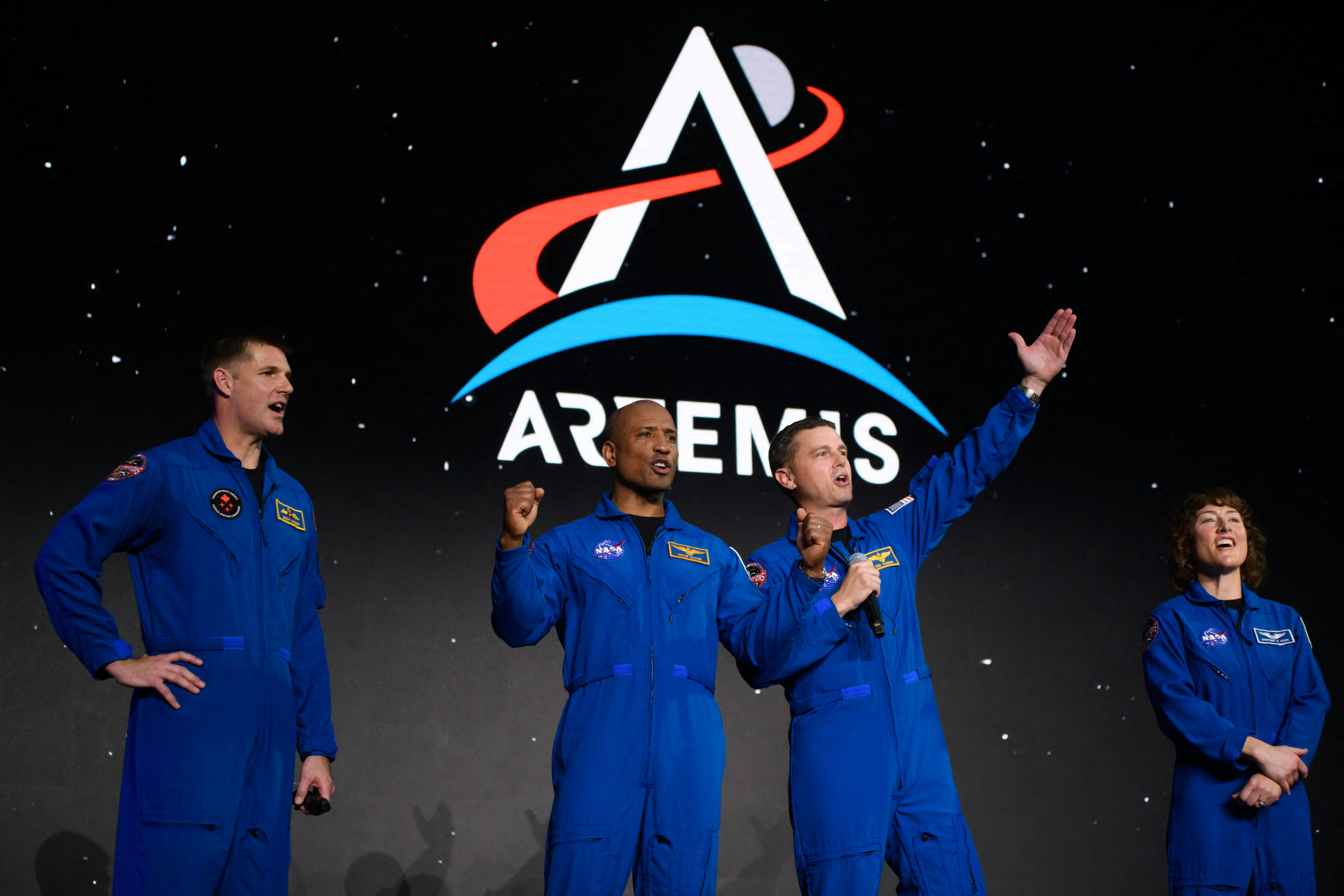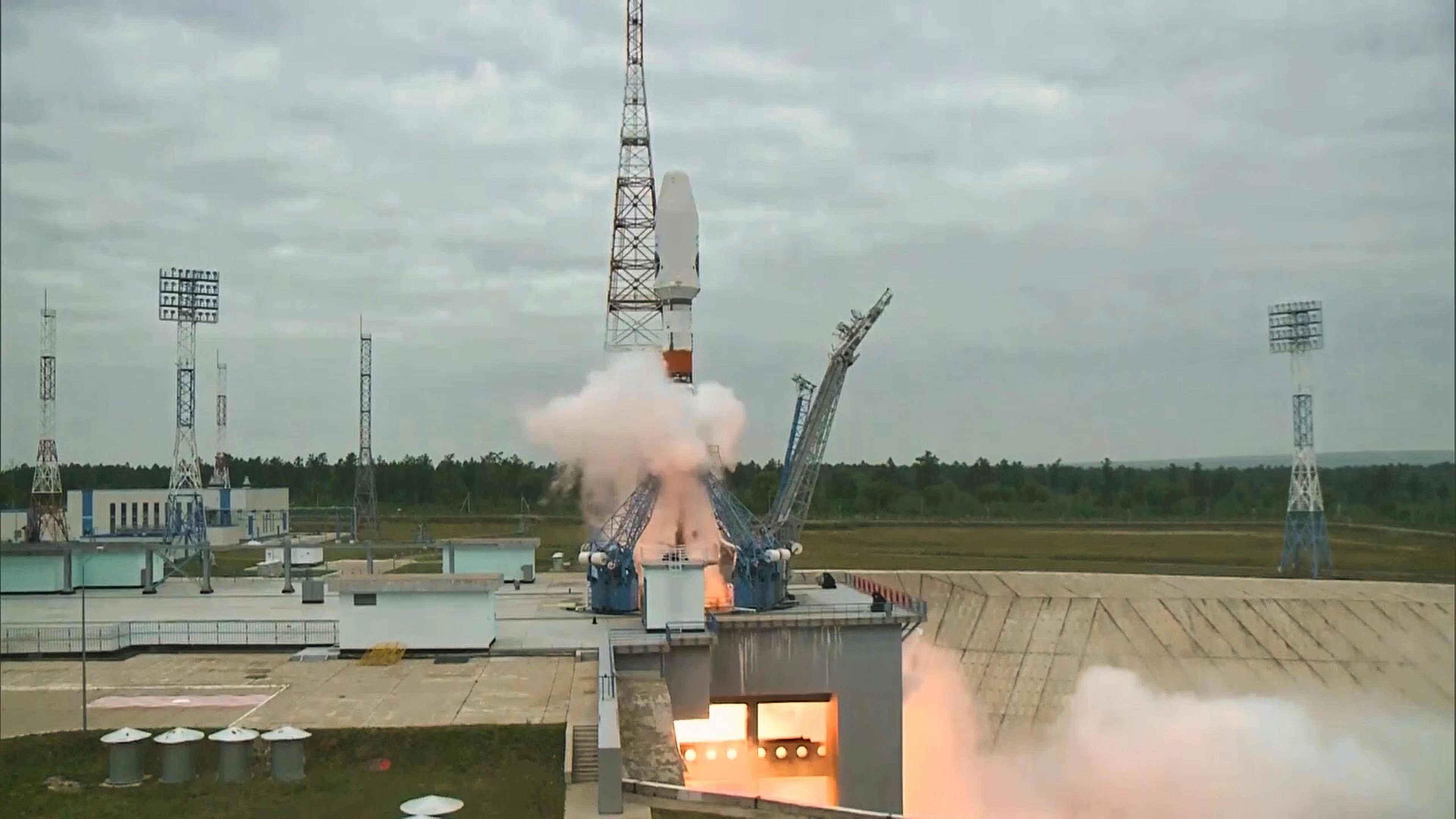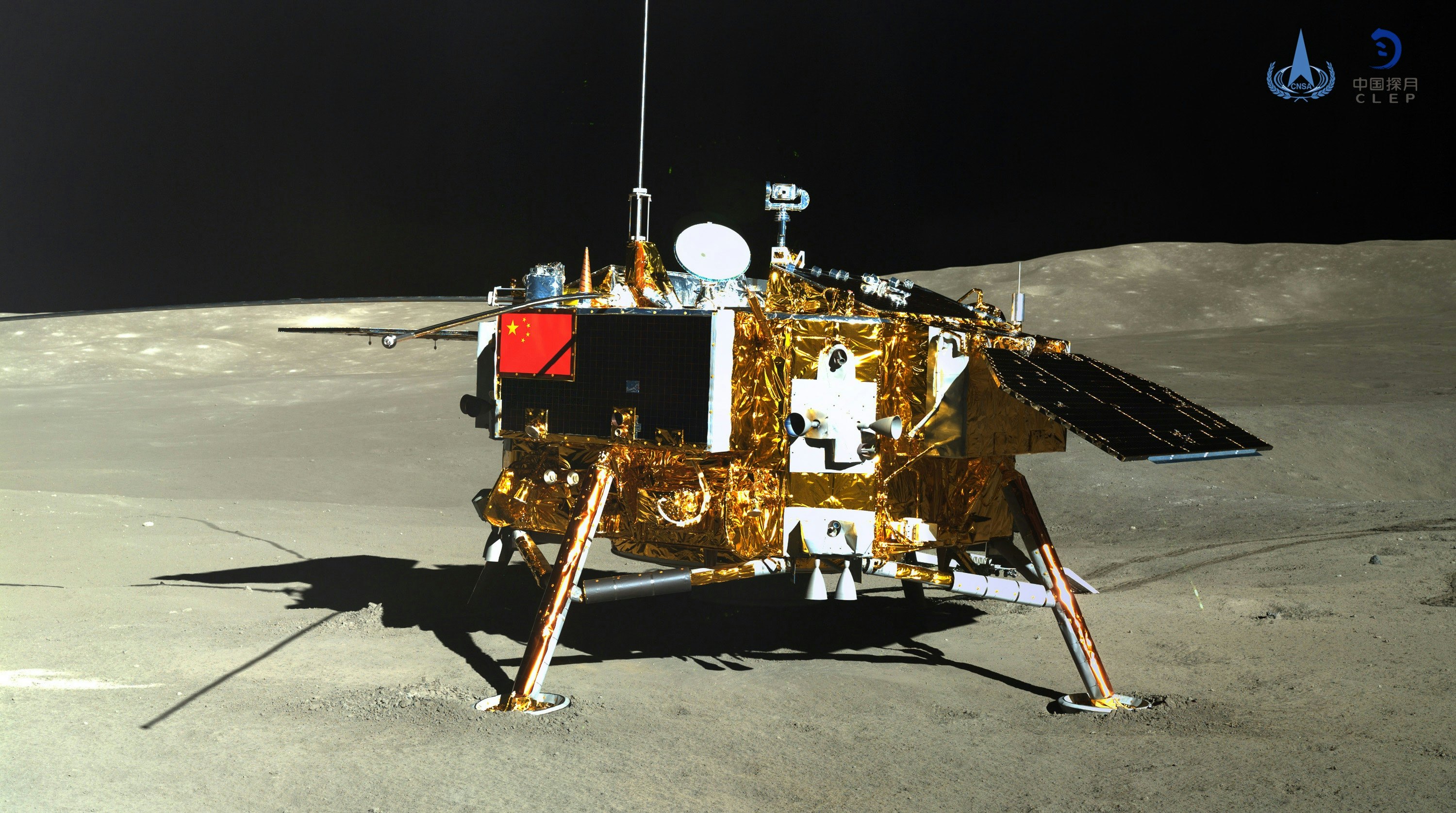
The south pole of the Moon just might be the hottest real estate in the Universe right now. Nearly every country with a space program has its eyes set on establishing a presence on the lunar surface’s south side. NASA, for example, is currently in the middle of its Artemis campaign, set to culminate with a permanent U.S. settlement there, and India, Russia, and China are all inching their way to our neighboring celestial body.
If this feels like deja vu, you’re not wrong. The original “space race” — a fierce battle between the U.S. and the Soviet Union over who had the technology to conquer the cosmos first — began with the launch of Sputnik 1 and culminated with the U.S. landing the first crewed spacecraft, Apollo 11, on the moon. But now, over 50 years later, we may be entering an entirely new era of space exploration, one that seems poised to come with a race of its own.
Earlier this month, at a press conference at Kennedy Space Center for NASA’s Artemis II mission, NASA administrator Bill Nelson expressed concern that if China's space agency beat NASA to a crewed Moon landing, China might deny other countries access to landing sites and water ice.
“The space race is really between us and China,” said Nelson. “And we need to protect the interests of the international community.”
Inverse talked with space policy expert Ian Christensen of the Secure World Foundation, who also is involved in "twice-yearly informal, off-the-record dialogues with the U.S. and Chinese space sector actors,” about why the U.S. and China are gearing up for a new “space race,” what exactly is at stake, and how it’s likely to play out.
Why We’re Racing to the Moon Again
NASA and the China National Space Administration (CNSA) seem to be eyeing some of the same landing sites for Artemis III and Chang’e-7, a CNSA mission to explore the Moon, including landing on its surface, planned for a 2026 launch.
That’s not terribly surprising. The Moon’s southern craters are an ideal location for a number of reasons. First, the area offers a near-perfect landing site: a high, flat ground with good lighting. The resources around it also make it possible to set up a permanent base on the moon. A nearby crater contains an ice deposit large enough to turn the frozen water into rocket fuel and breathable oxygen — two resources that are critical to establishing long-term bases on the Moon and eventually providing logistical support for missions to Mars. And that’s something both countries are determined to do.

All of this, on some level, is about power.
“Space is not separable from diplomatic soft power,” says Christensen. (“Soft power” refers to wielding influence rather than military might or financial leverage.) “The State Department and NASA have tried to leverage space as part of U.S. international diplomatic strategies. China does the same thing; they don't have quite the brand identity, but they certainly bring space into diplomatic and trade agreements.”
Domestic policy may also have something to do with it. The idea of a space race hearkens back to the Cold War, and that is politically expedient for both countries, at least in some ways.
“There's something of an ‘Apollo hangover’ in the U.S.,” says Christensen. “The idea that competition with the Soviets led to this tremendous achievement, and we want to recapture that sort of environment. I think there's certainly an element of that in there.” The idea of a competitor might also give the U.S. space program a sense of urgency.
Meanwhile, Christensen says, “The Chinese ecosystem is certainly motivated at a certain level by trying to maintain its reputation as a space power,” and keeping pace with the U.S. is a key part of that.
A New Race, a New Rival
What about our old Cold War “space race” rival, Russia? Nelson essentially dismissed Russia as a competitor in the current race to the Moon. He cited a long history of U.S. and Russian cooperation in space (although that, too, has been strained since Russia invaded Ukraine). But he also made it clear that Russia just isn’t in a position to compete:
“I don't think that a lot of people at this point would say that Russia is actually ready to be landing cosmonauts on the Moon in the timeframe that we're talking about going to the Moon, or that possibly China would be,” Nelson said.
As if to prove Nelson’s point, Russia’s Luna-25 lander crashed during an attempt to land near the Moon’s south pole on August 19. Luna-25 had been neck-and-neck with India’s Chandrayaan-3 lander in the race to become the first spacecraft to land near the Moon’s south pole.
The crash is an embarrassing political setback for Russia, whose president Vladimir Putin touts the country’s space program as proof of Russian power, both to his own people and to other countries.

Despite Putin’s ambitions, though, it’s been more than 30 years since Russia was a real space power. In recent years, Roscosmos has mostly been in the business of ferrying astronauts and supplies to the International Space Station (and even that hasn’t gone so well lately). The agency has been working on a shoestring budget for decades. Money — and access to hardware — has gotten even tighter since Russia invaded Ukraine in early 2022, triggering waves of international sanctions, including from some of the countries that were originally slated to provide electronic components for Luna-25.
With Luna-25 now a pile of scrap on the lunar surface, it looks like India may beat Russia — and everyone else — to the south pole of the Moon. But for NASA, China remains the competitor to watch: the country is a powerhouse economic, political, and ideological rival to the U.S. here on Earth, and (unlike Russia) it has both money and political will to throw behind a race to the Moon.
No One Owns the Moon
So how will the new lunar “space race” unfold? Neither the U.S. nor China (nor anybody else) can just plant a flag and declare that they own Shackleton Crater. Both countries have signed the Outer Space Treaty, which says that celestial bodies like the Moon and Mars can’t be claimed as national territory.
On the other hand, you really can’t land your spaceship on top of somebody else’s astronaut encampment or robotic lander. The U.S. and China agreed, by signing the Outer Space Treaty, not to cause “harmful interference” with each other’s operations, which definitely includes not landing a rocket on them. What’s less clear is how much room one country is obligated to give another country’s landing site, for example.
Sorting out that kind of detail is going to be a huge challenge in the years ahead, and communication between the U.S. and Chinese governments will be key to working out those issues — and maybe even setting the precedent that will define how countries interact on the Moon, on Mars, and in the asteroid belt.

The question, says Christensen, is, “Do we have the lines of communication between these two states to figure out deconfliction mechanisms or to share information on activities being conducted so that we don't stumble into some sort of inadvertent crisis points?” But the two countries’ strained relationship here on Earth could make that difficult.
“We've seen kind of a difficulty in establishing communication channels in other domains of operations, so I think there's some concern that that will continue in the space domain,” says Christensen.
Navigating Around the Communications Barrier
U.S. law actually forbids NASA to talk to China’s space agency. An amendment to a 2011 appropriations bill, called the Townsend amendment, prohibits direct discussions between NASA and Chinese officials.
Instead, says Christensen, conversations on coordinating and minimizing conflict on the Moon have to happen in big, multinational forums like the UN Committee on the Peaceful Use of Outer Space or the International Space Exploration Coordination Group, or in what Christensen describes as "informal dialogues between stakeholders on both sides.” Those are mostly discussions about the broad strokes of each country's goals and principles — not establishing rules of the road for future lunar settlements.

"We're not looking for agreements, and we're not looking for any sort of cooperation; we're just looking to have some very basic kind of better understanding of individual and cultural logic," says Christensen. "It's a kind of indirect and slow process."
And there are other ways to work around the Townsend Amendment. The U.S. and China have managed to swap scientific information a few times in the past, trading observations from NASA’s Lunar Crater Observation and Sensing Satellite (LCROSS) for data from China’s Chang’e missions.
“I think we should be looking for more opportunities to do that: around sample uses, physical characterization of the regolith, things like that,” says Christensen, “so that some limited basic scientific data exchange can occur and help us have some connections.”
Tension, But Not Conflict
Things between the U.S. and China are already tense, and that’s going to make us awkward lunar neighbors at best. And there’s a very good chance that disputes over lunar landing sites could add stress to the already strained relationship between the U.S. and China here on Earth.
“There's a risk that it becomes another point of tension in this larger dynamic between the two states,” says Christensen.
But he doesn’t expect that tension to spill over into armed conflict, either on the Moon or about the Moon.
“I think conflict over the Moon is probably unlikely in the foreseeable future,” says Christensen. “I don't think we've yet established the type of integration of the Moon into broader economics and geopolitics to bring into conflict.”
In the end, Christensen says a space “race” probably isn’t the right word and definitely not a productive one. “I think it puts a little bit too much importance on getting there first and detracts from some of the more long-term questions.”







